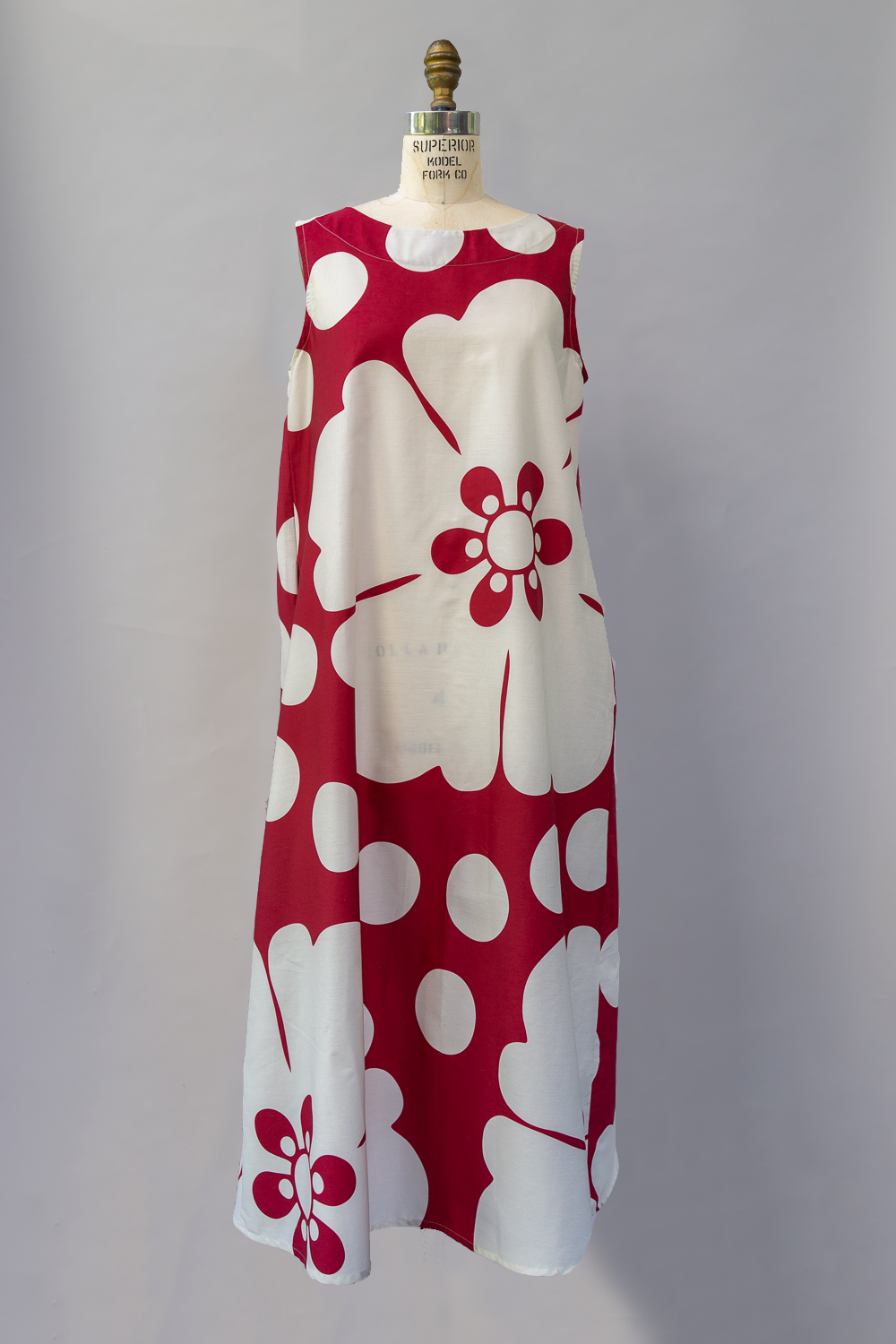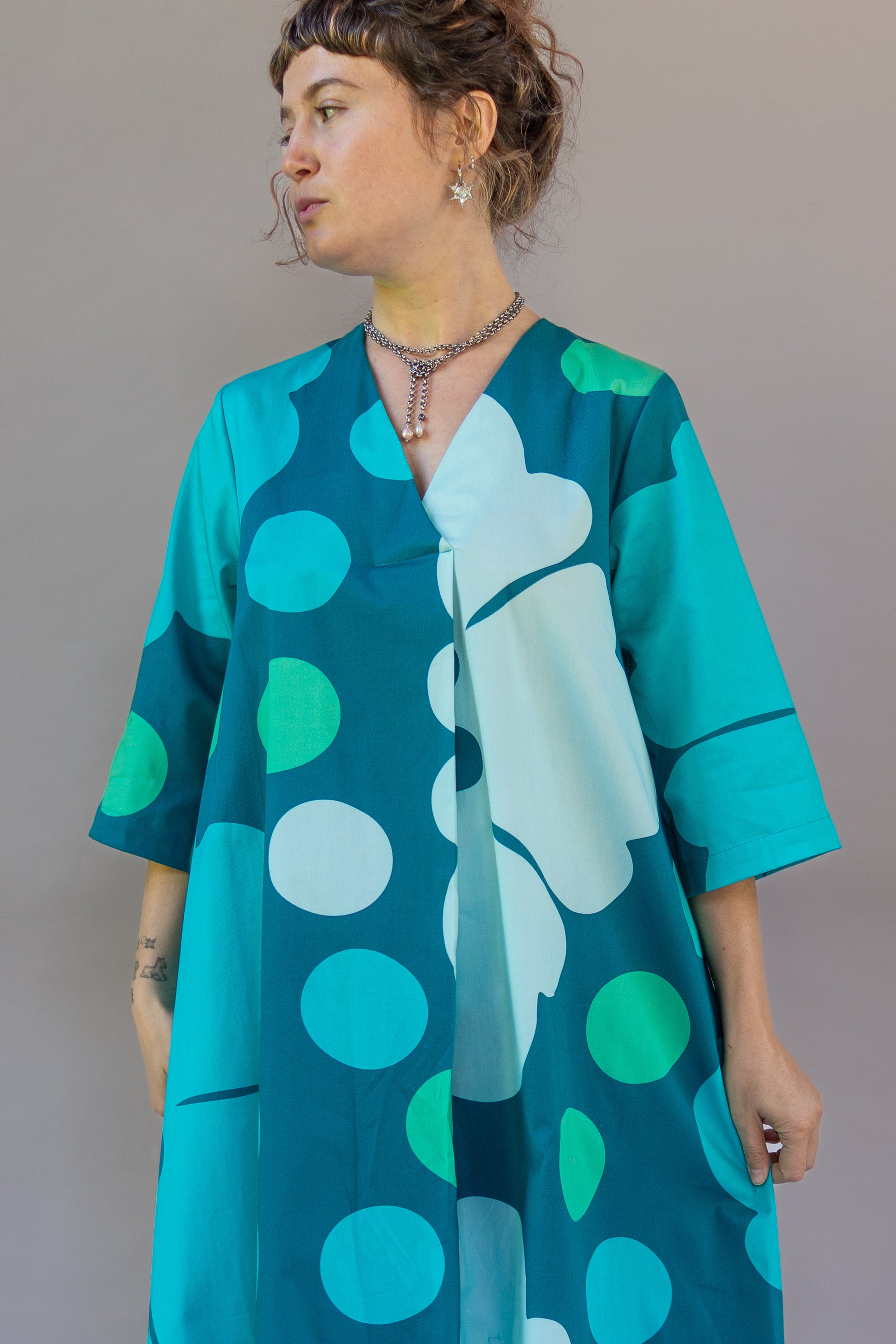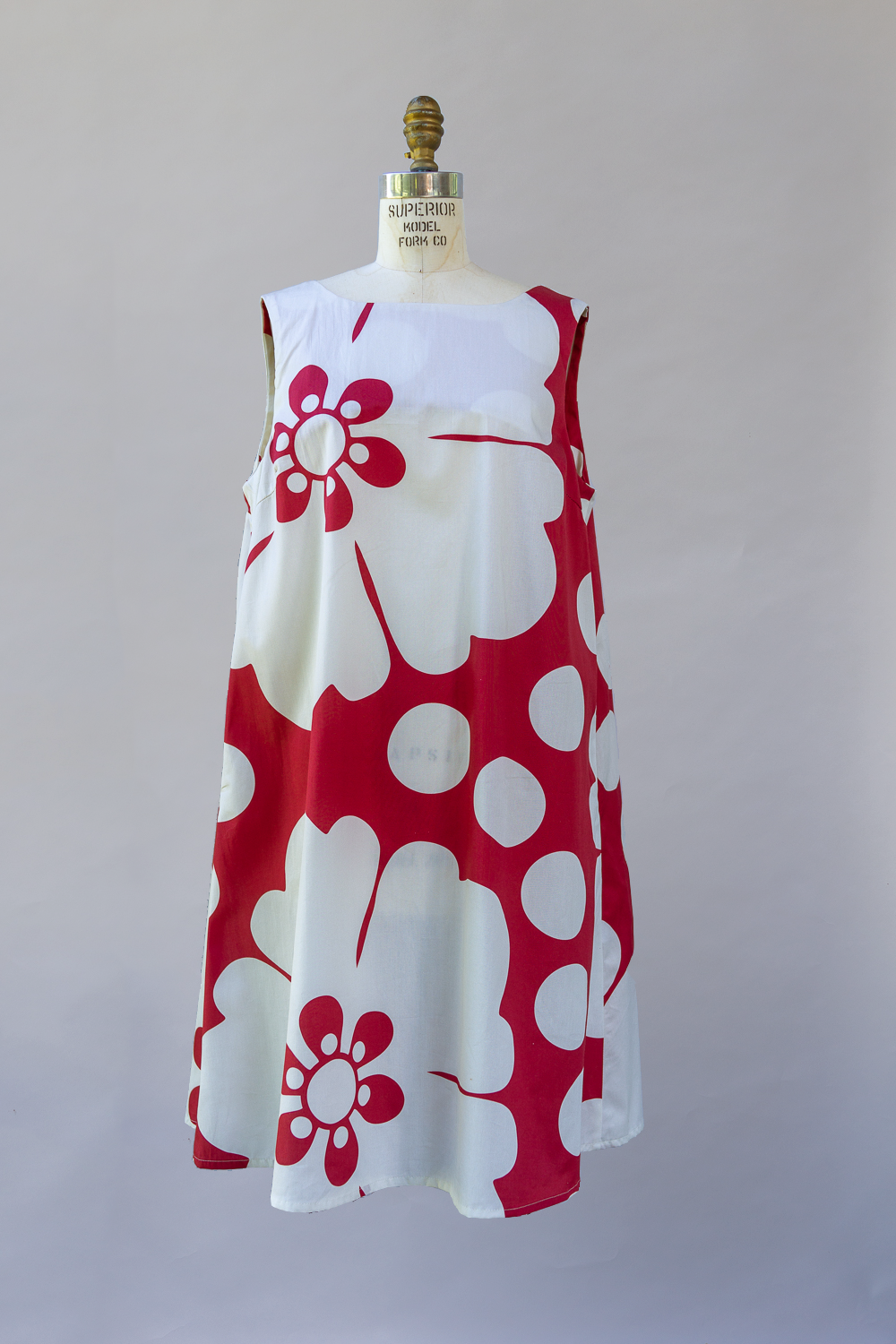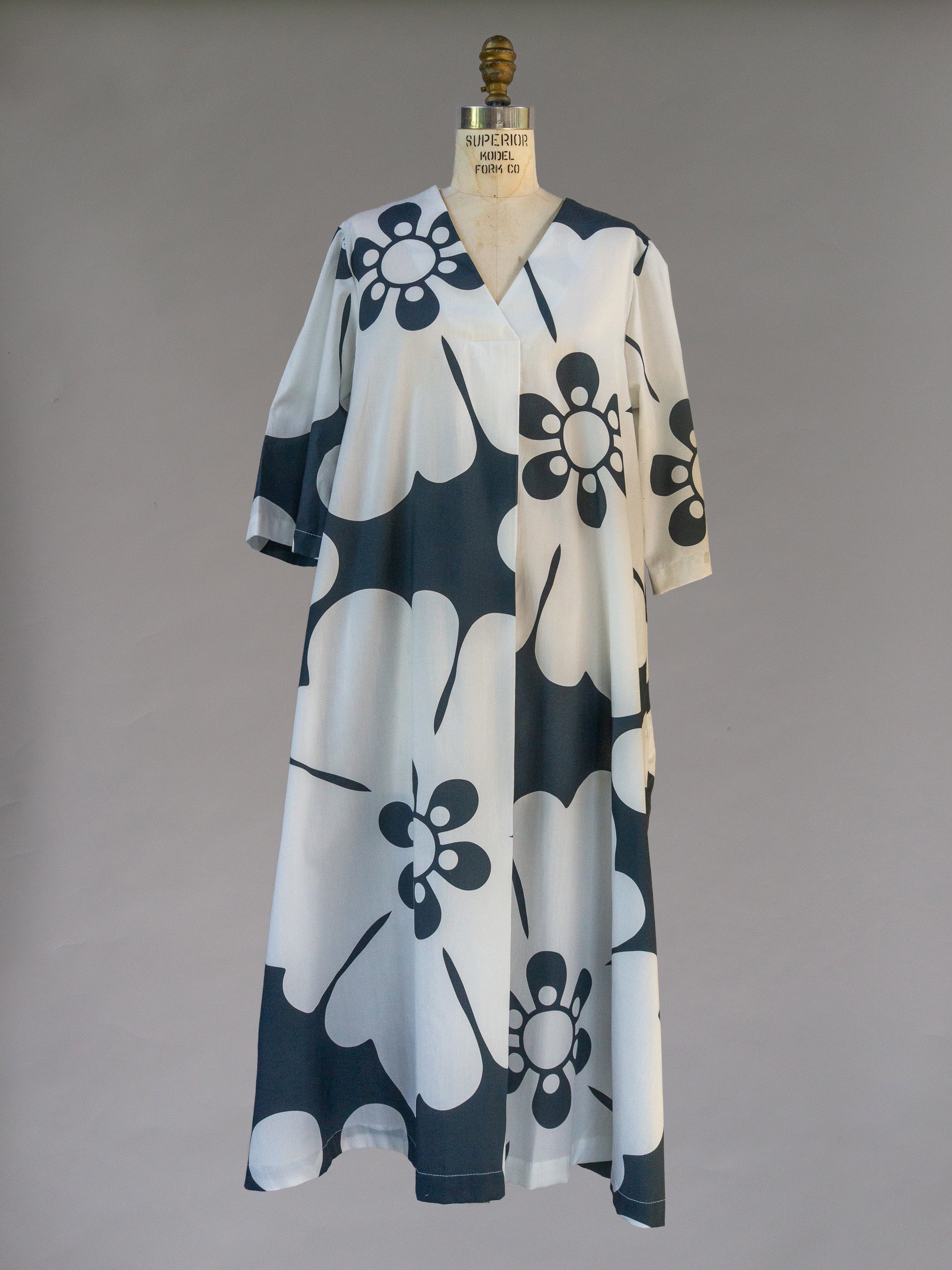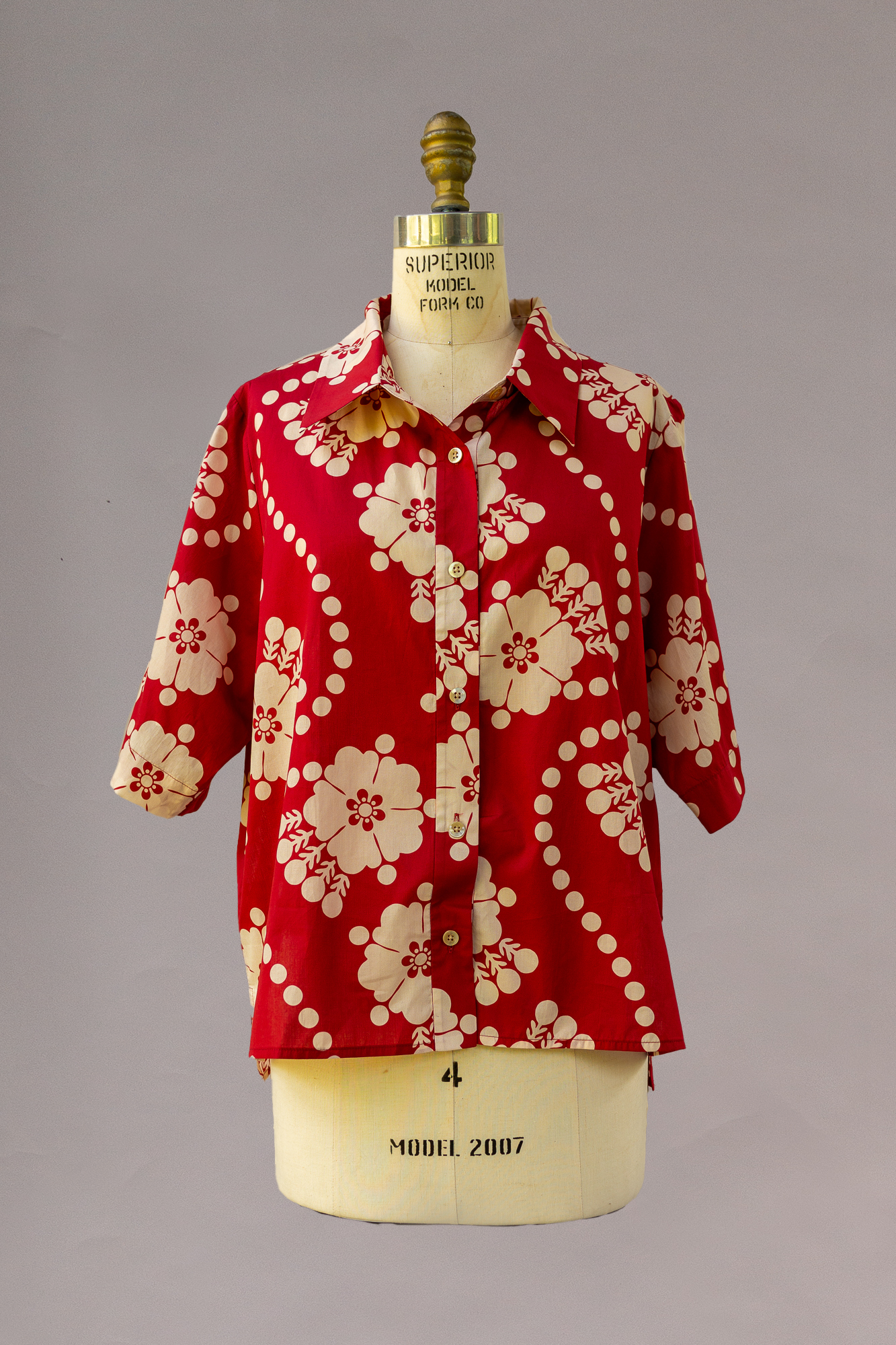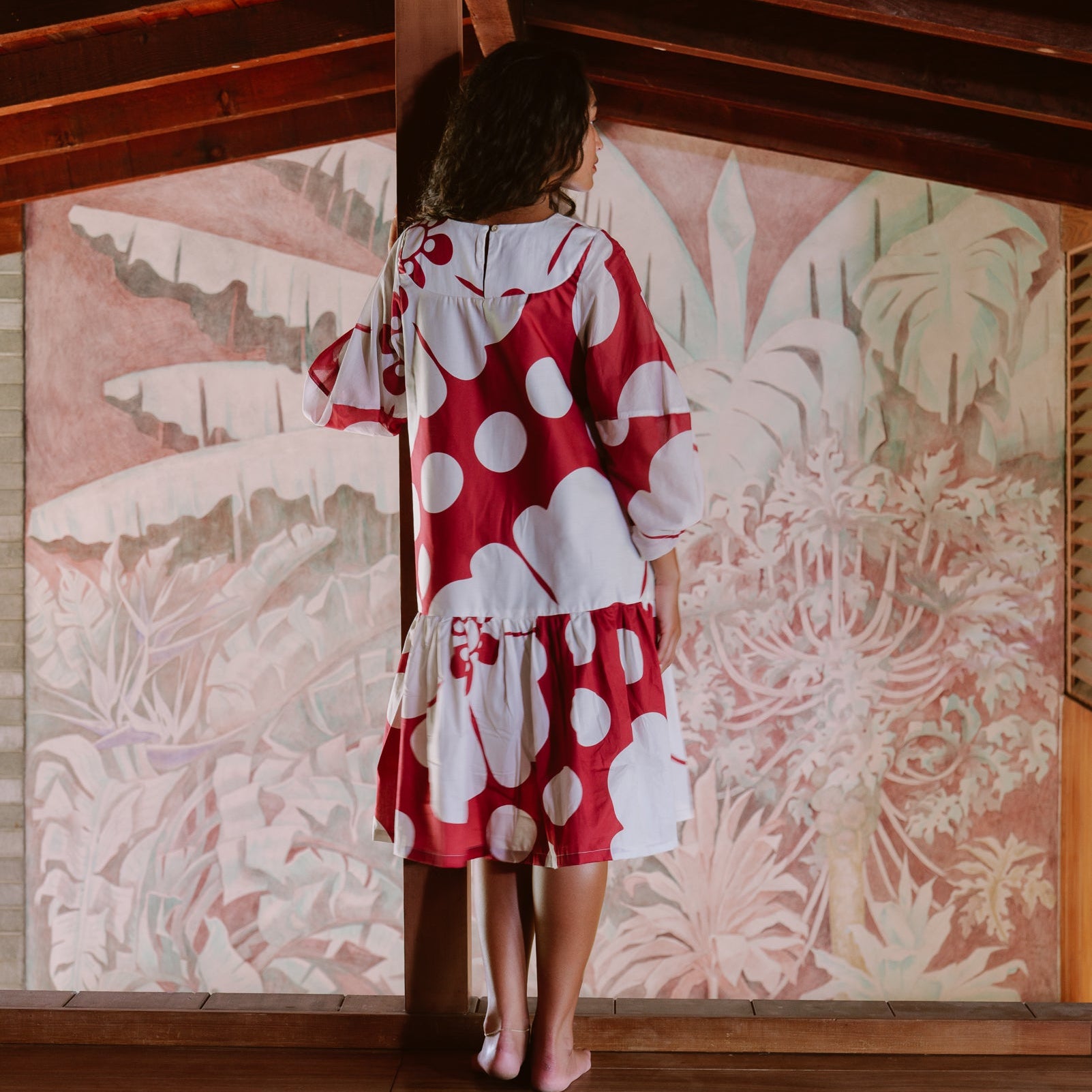Pareo Print Story
Part shaggy dog tale, part historical mystery, this print took us two years to solve.
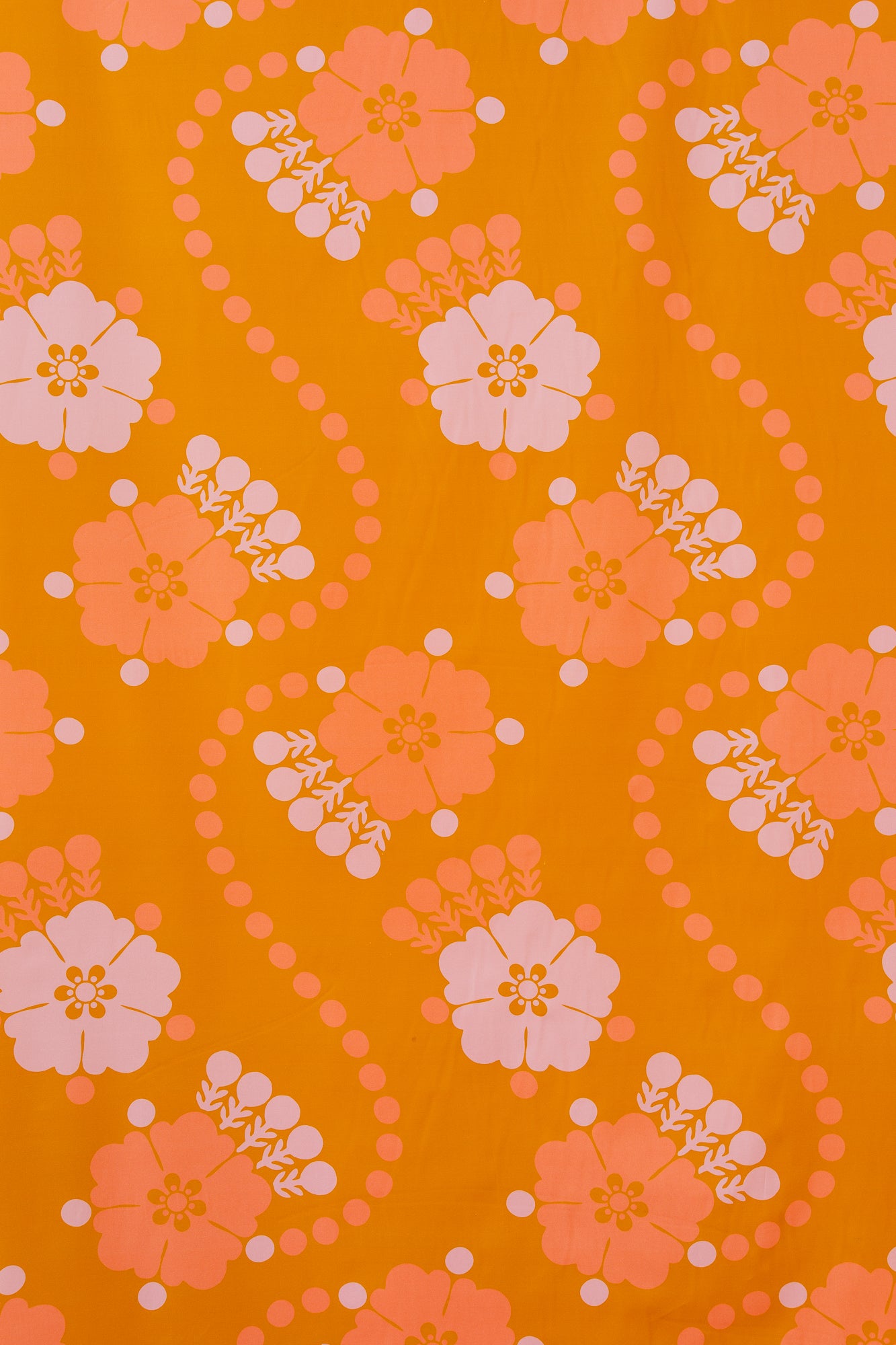
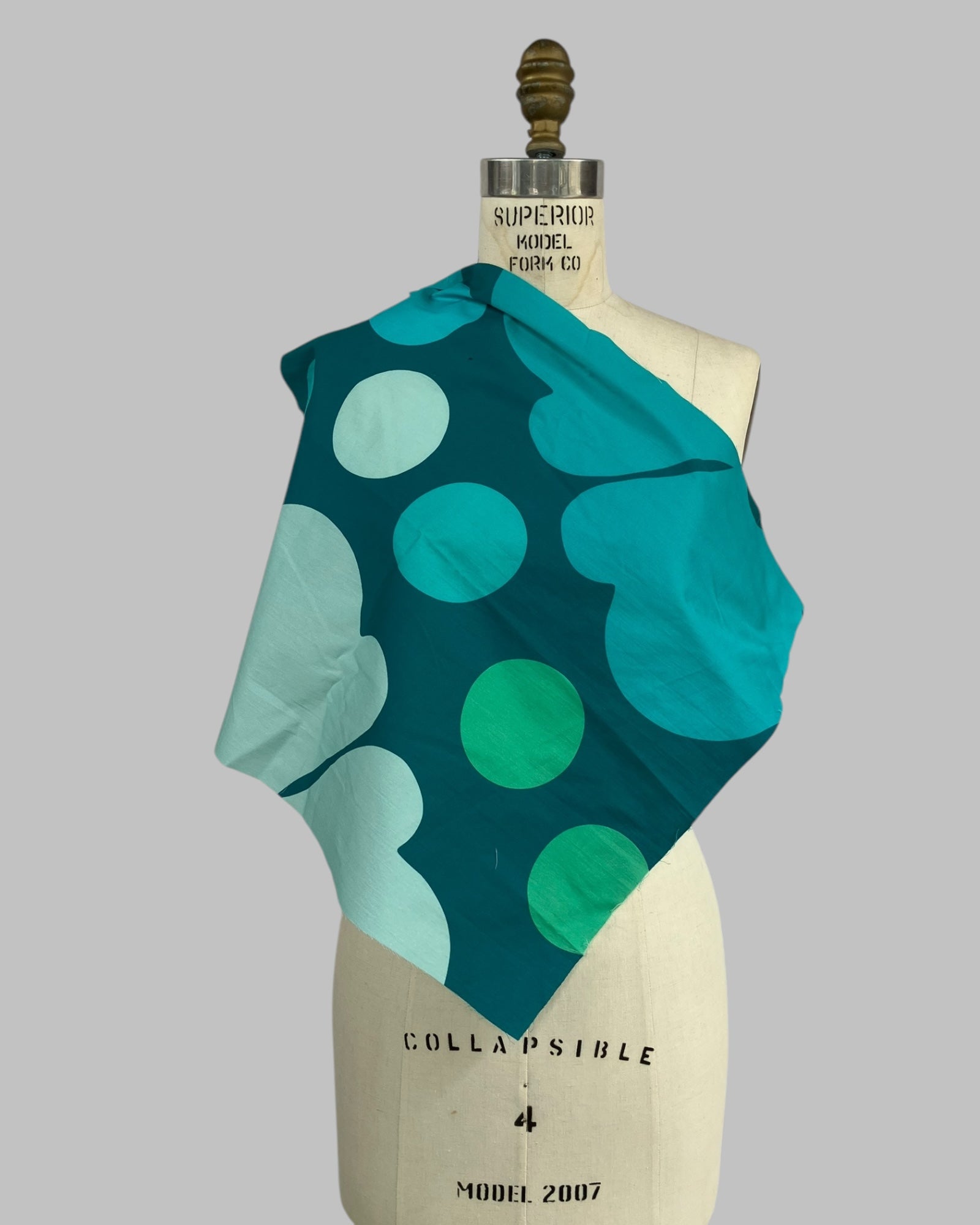
what is this print?
pareo
Pareus are large pieces of fabric used as a unisex clothing in Tahiti and other parts of Polynesia. Before European contact, pareus were made out of kapa/tapa, a barkcloth fabric. Pareu also refers to a type of simplified, knocked out floral print. So, a pareu can be a wrap or a print, or both things at once. They are closely identified with Tahiti but can also be used to represent Polynesian-ness.
inspiration
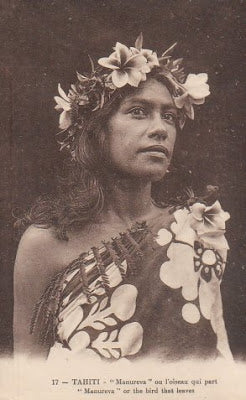
In the 1700s European traders brought pareu print cotton cloth as trade goods to the Tahitian islands and other parts of Polynesia.
The origin of the prints themselves is not completely clear. It is probable that these prints were developed specifically for trade in the Pacific and manufactured in England and France.
Our beloved pareo print works in all types of sizes in colorways. This print took us two years to develop from an early 20th century Tahitian postcard.
The eureka moment came when we realized it was probably a resist print created with paper and scissors instead of painted on with a brush.
Read Morepareo print
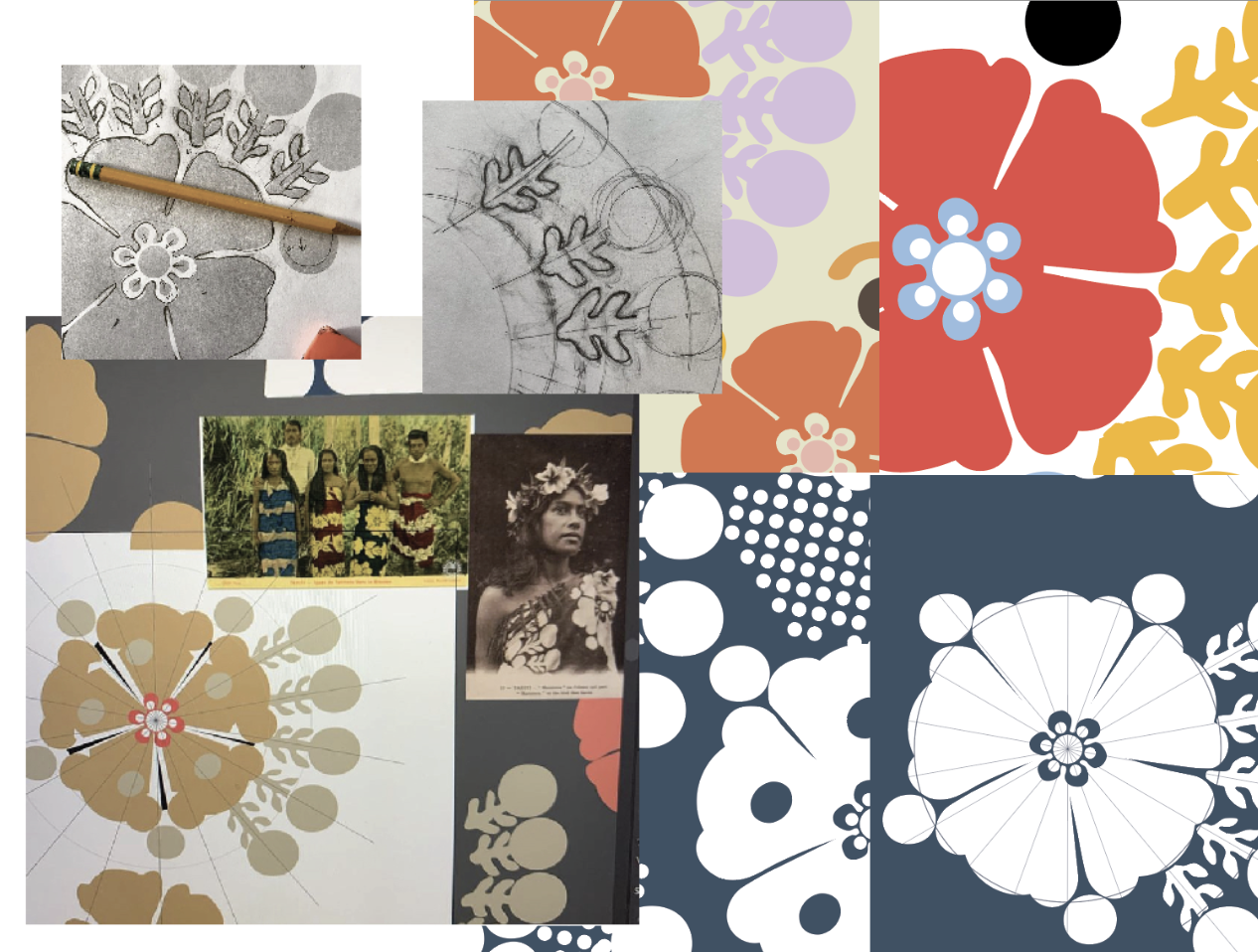
our process
Our prints are concept driven and development may span several years. We build hardworking repeats and take no design shortcuts. We love prints and print history and embrace a research heavy, somewhat academic process.
in the wild

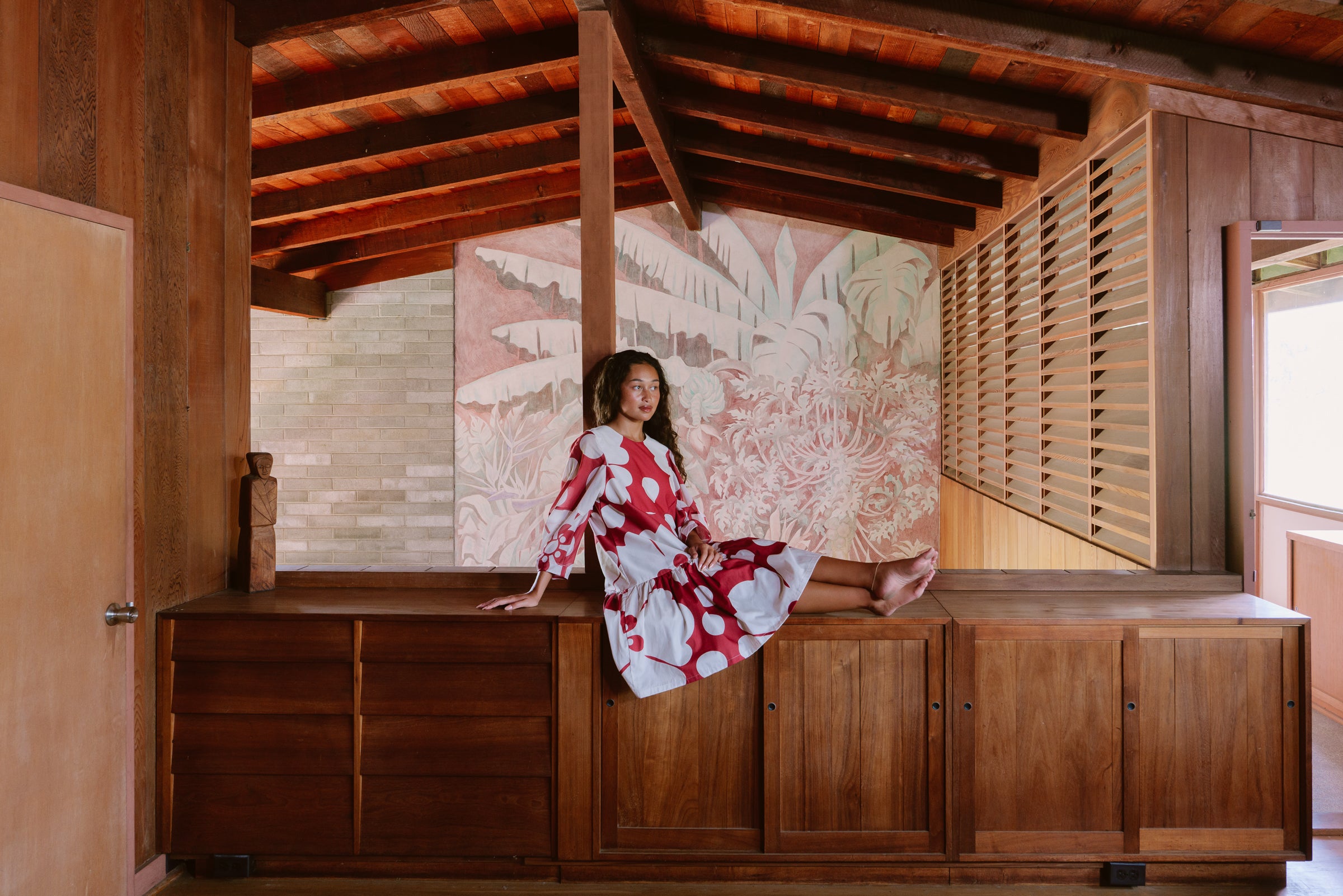
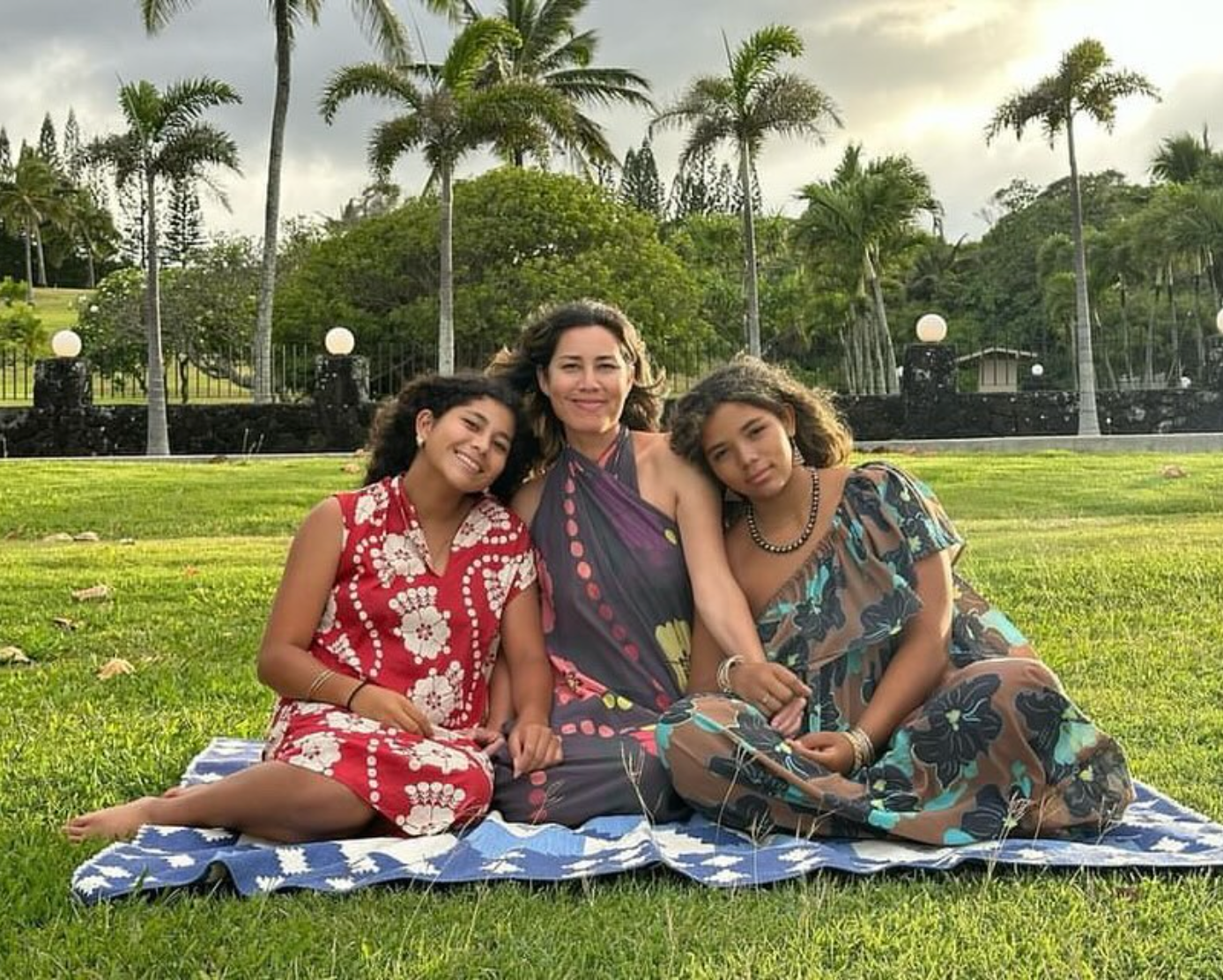
all our prints
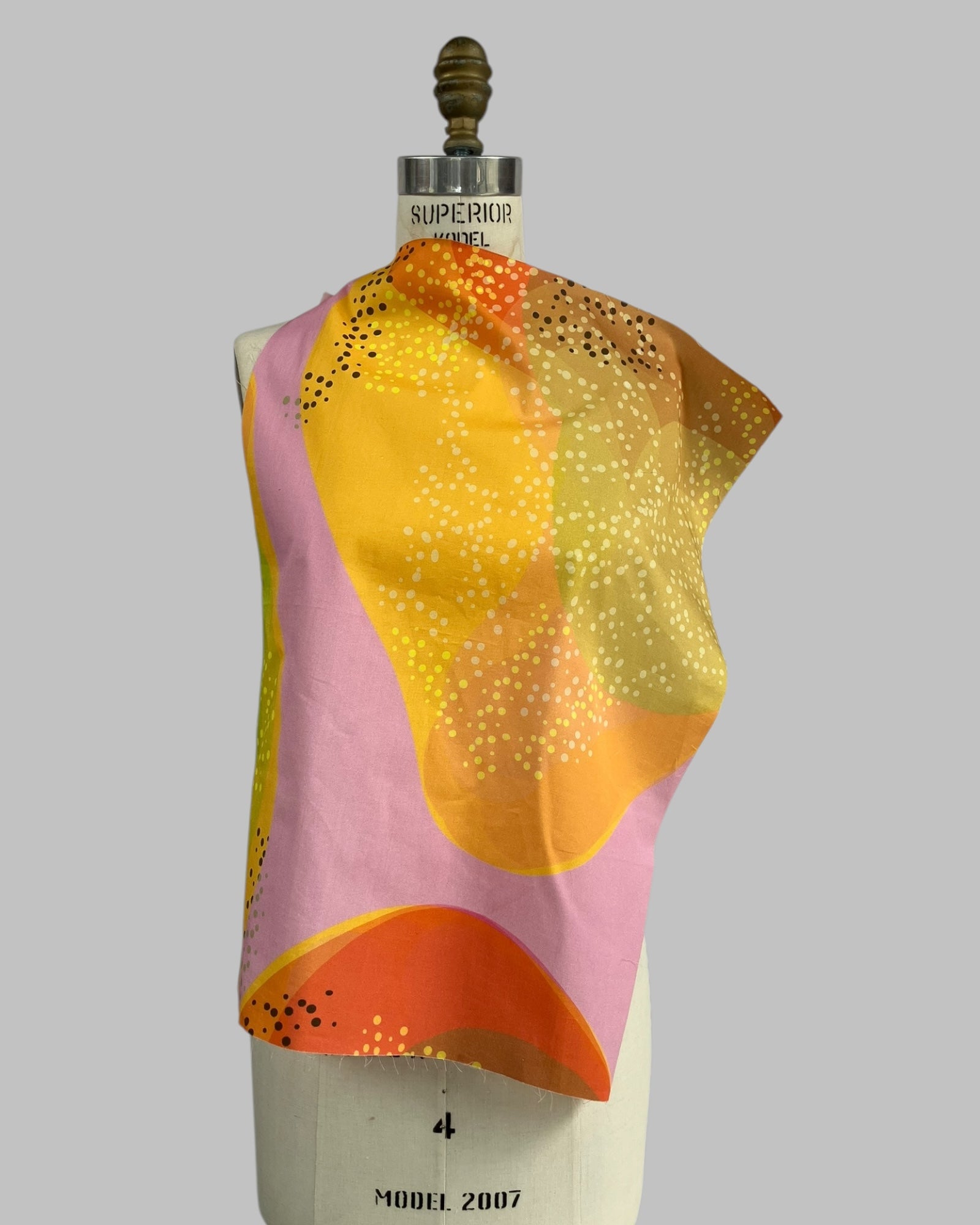
mango
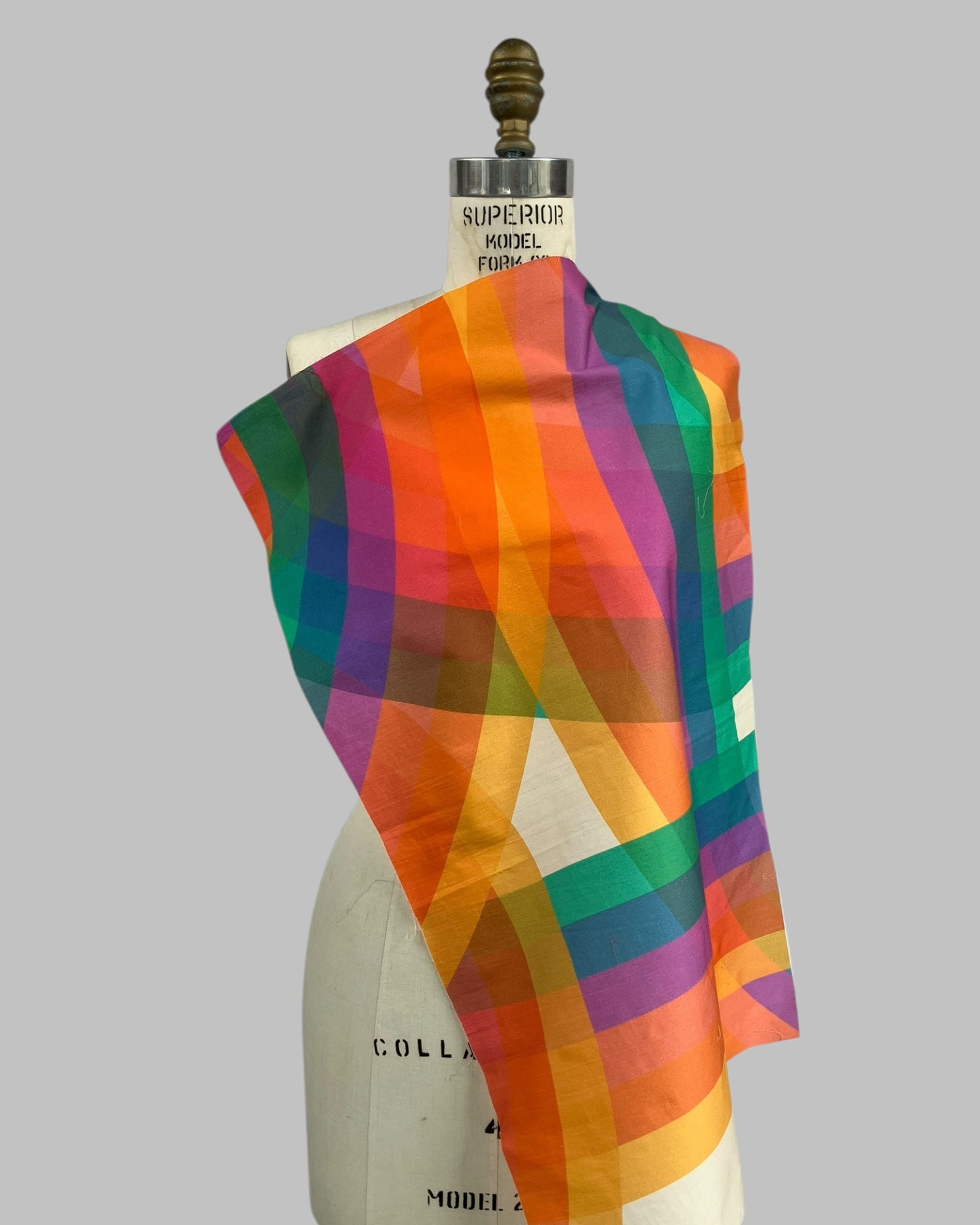
rainbow
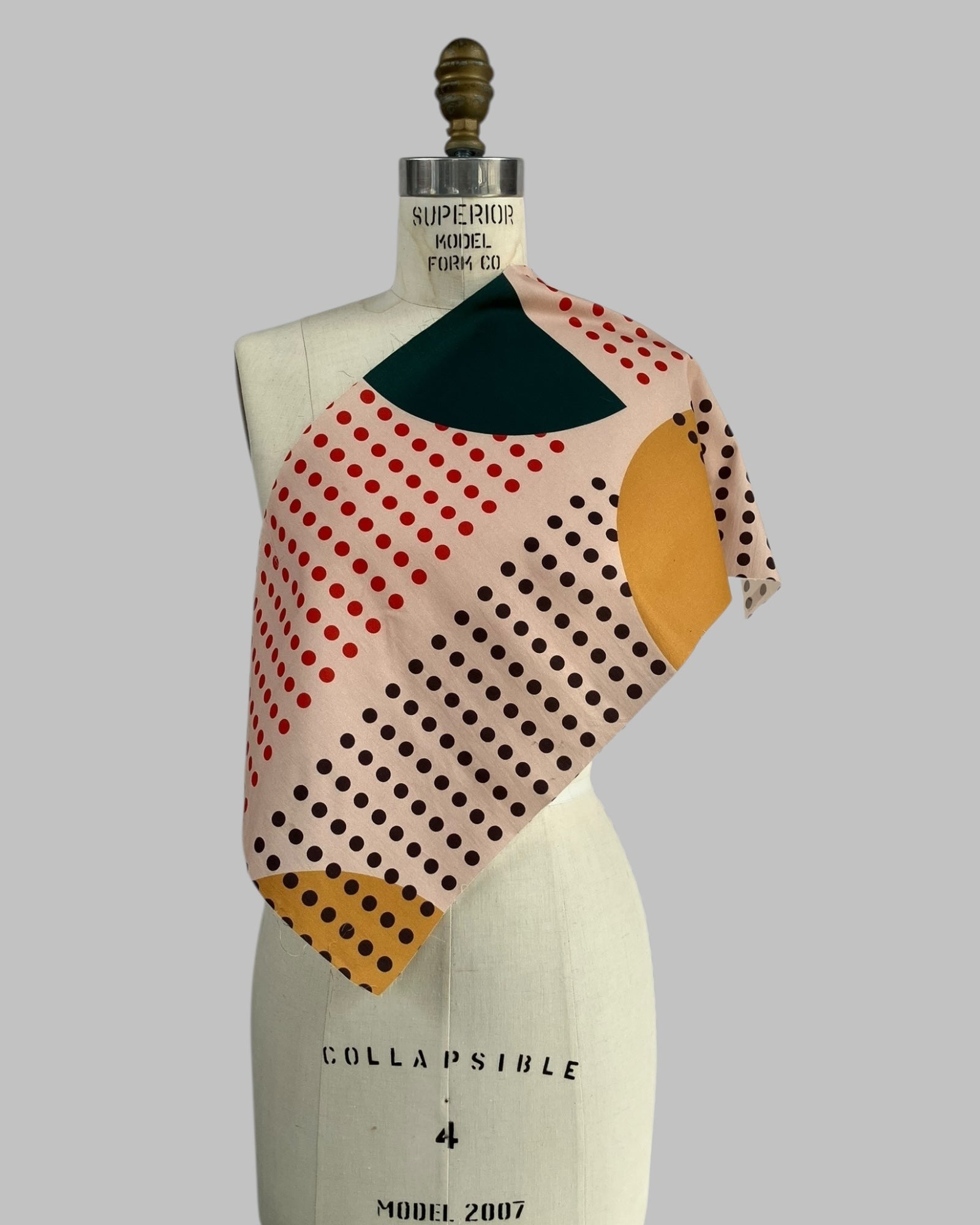
sunrise
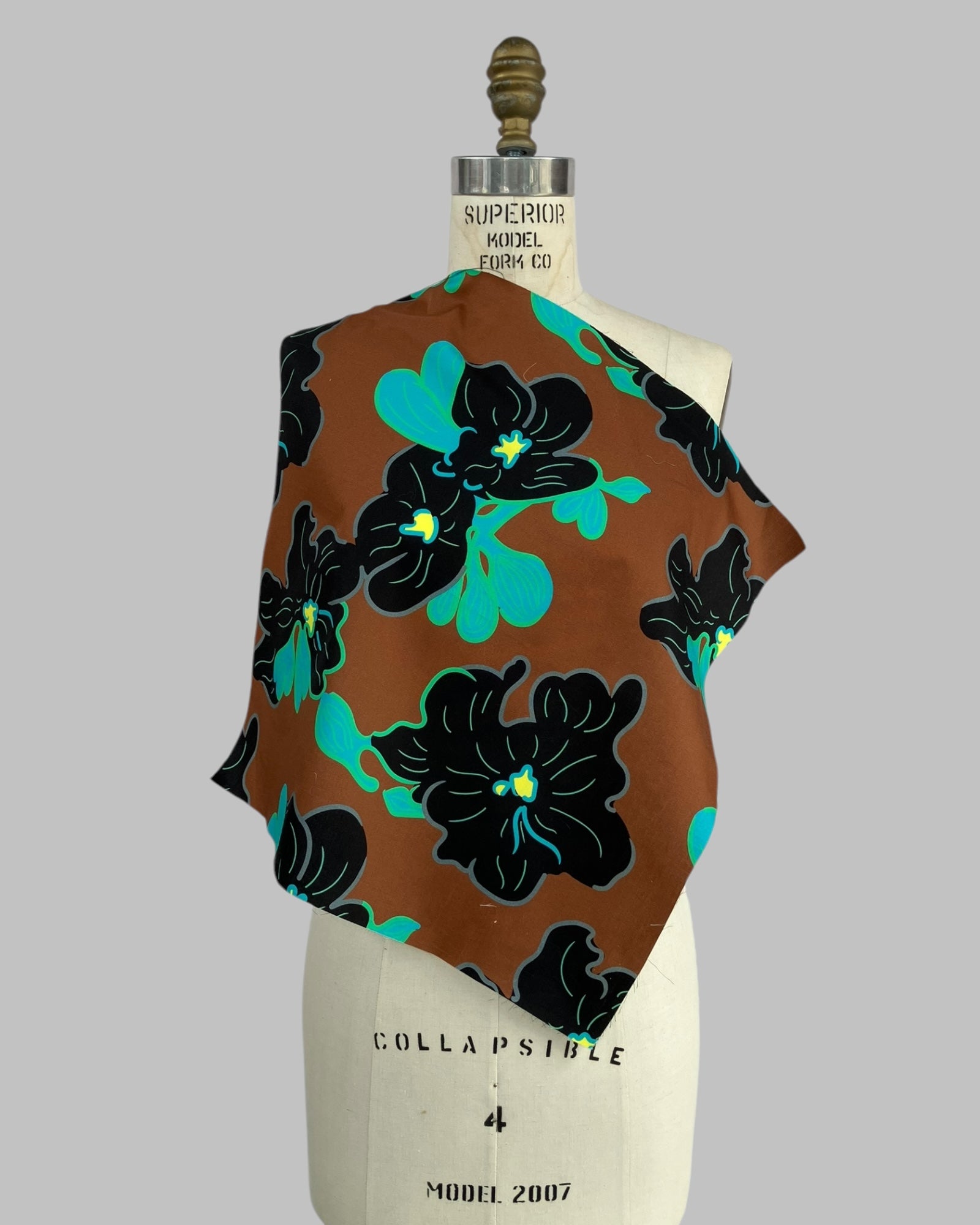
1961
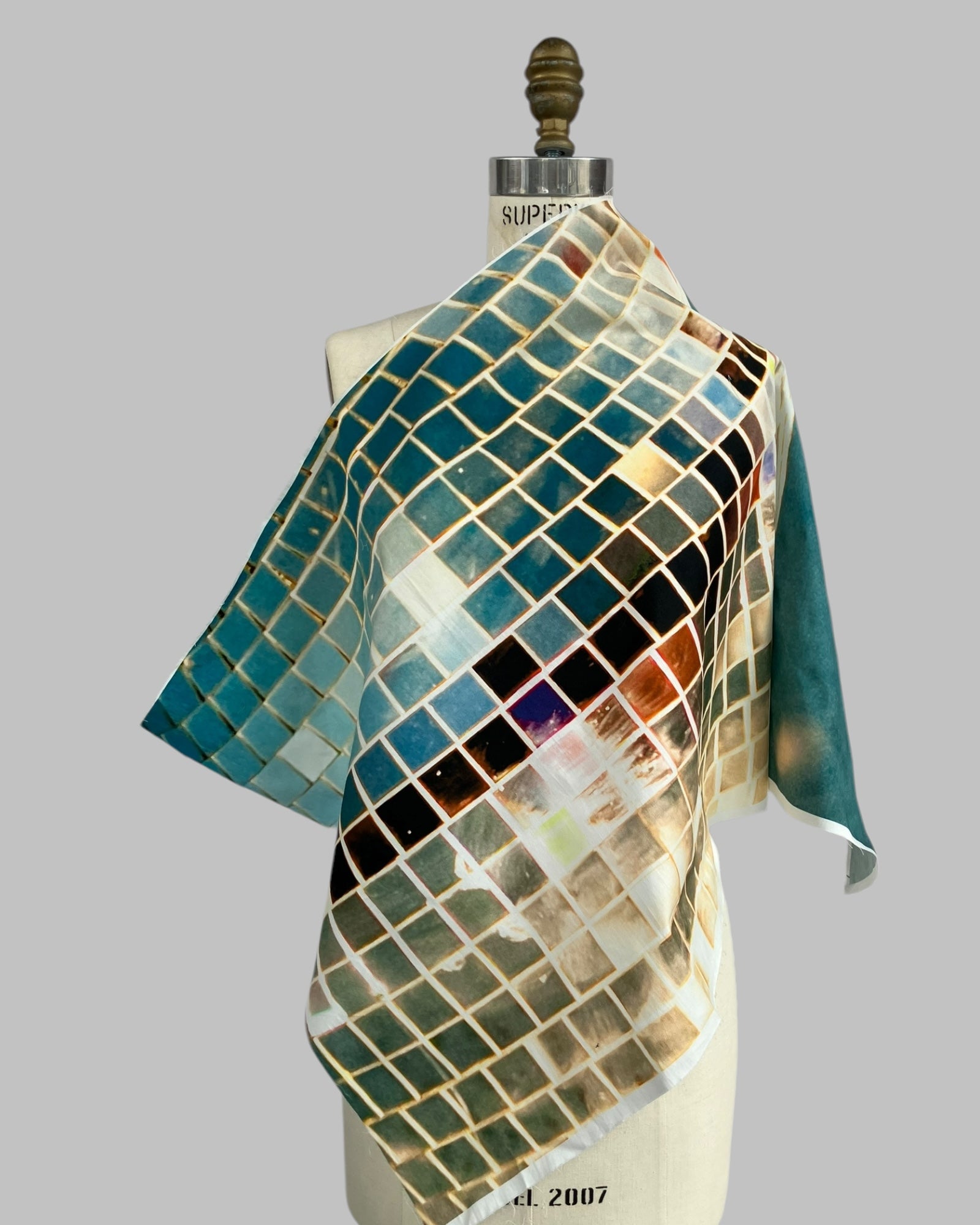
disco
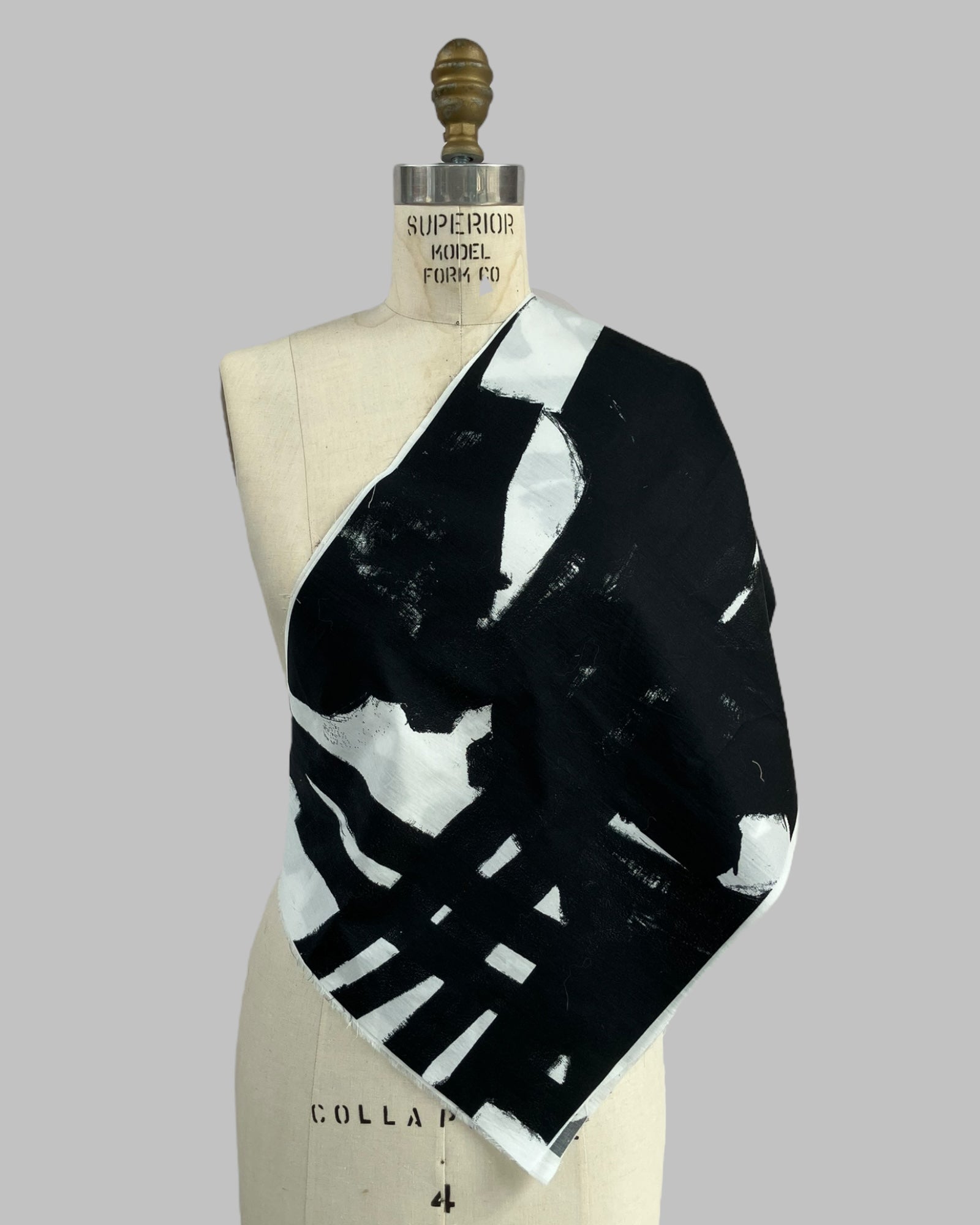
westbeth
and now...
some history
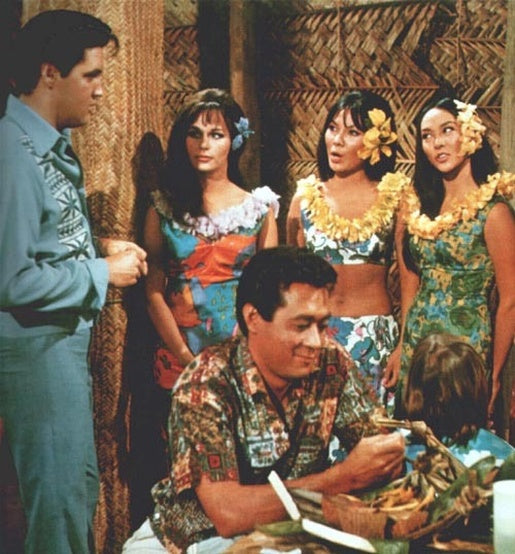
why are the prints so big?
Large scale prints are integral to muʻumuʻu and all aloha wear. How did this happen? There are a lot of apocryphal origin stories. One we particularly like is that Wong’s Drapery Shoppe helped create the aloha shirt for college bound Hawaiians going to the mainland. The students needed something both warm and that felt Hawaiian. Wong’s initially used thick Japanese upholstery fabric for the warmth so the large print scale became locked in as “Hawaiian.”
These prints represent the multicultural history of Hawaiʻi. They may refer to Japanese Kimono fabrics, European chintz florals, Indian paisleys, Indonesian batiks, and traditional kapa patterns. They may be designed “authentically” by a native Hawaiian, a kamaʻāina (a local), or a transplant to the islands. The authenticity comes from the knowledge, sense, and respect of place.
Elsie Das
In the 1930s and 40s there was a concerted effort to create the modern Hawaiian print using local themes. This has been much lauded in Alfred Shaheen’s work. Also consider Elsie Das. Elsie Das was an American of Danish descent who went to art school in California. In 1950, the Honolulu Advertiser wrote “Elsie Das can lay close claim to being the originator of the aloha print.”
Her approach to print shows a sophistication and a worldliness at odds with the stereotypes about “isolated” Hawaiʻi. Compare her ulu print with the great 20th century print designer Josef Frank. The similarities indicate a deep understanding of print design and trends at the time.
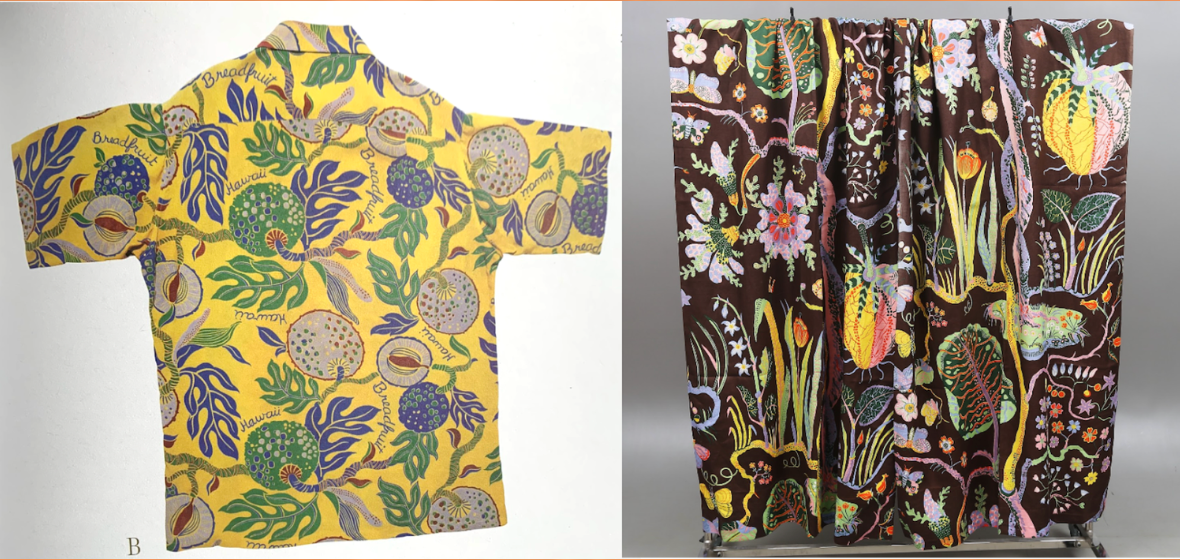
Left: Elsie Das “Breadfruit,” Right: Josef Frank “Hawaii”
For more read: The Aloha Shirt: Spirit of the Islands, Dale Hope and Elsie Jensen Das, Peter Young.

